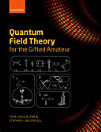The New Superconducting Electronics
H. Weinstock · Richard W. Ralston
2012년 12월 · NATO Science Series E 251권 · Springer Science & Business Media
eBook
457
페이지
report검증되지 않은 평점과 리뷰입니다. 자세히 알아보기
eBook 정보
This volume is based on the proceedings of the NATO-sponsored Advanced Studies Institute (ASn on The New Superconducting Electronics (held 9-20 August 1992 in Waterville Valley, New Hampshire USA). The contents herein are intended to provide an update to an earlier volume on the same subject (based on a NATO ASI held in 1988). Four years seems a relatively short time interval, and our title itself, featuring The New Superconducting Electronics, may appear somewhat pretentious. Nevertheless, we feel strongly that the ASI fostered a timely reexamination of the technical progress and application potential of this rapid-paced field. There are, indeed, many new avenues for technological innovation which were not envisioned or considered possible four years ago. The greatest advances by far have occurred with regard to oxide superconductors, the so-called high transition-temperature superconductors, known in short as HTS. These advances are mainly in the ability to fabricate both (1) high-quality, relatively large-area films for microwave filters and (2) multilayer device structures, principally superconducting-normal-superconducting (SNS) Josephson junctions, for superconducting-quantum-interference-device (SQUID) magnetometers. Additionally, we have seen the invention and development of the flux-flow transistor, a planar three-terminal device. During the earlier ASI only the very first HTS films with adequate critical-current density had just been fabricated, and these were of limited area and had high resistance for microwave current.
이 eBook 평가
의견을 알려주세요.
읽기 정보
스마트폰 및 태블릿
노트북 및 컴퓨터
컴퓨터의 웹브라우저를 사용하여 Google Play에서 구매한 오디오북을 들을 수 있습니다.
eReader 및 기타 기기
Kobo eReader 등의 eBook 리더기에서 읽으려면 파일을 다운로드하여 기기로 전송해야 합니다. 지원되는 eBook 리더기로 파일을 전송하려면 고객센터에서 자세한 안내를 따르세요.










